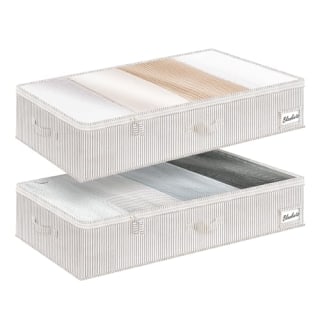On TikTok, warnings spread about the herbal tonic ‘Feel Free’

Misha Brown was walking into his local Circle K gas station in Austin, Texas, when he says a teenage boy approached him and asked him to buy him “Feel Free.” When Brown said no, he said he believed the boy tried to grab his wallet.
Brown, 37, recounted the story in a TikTok last month that has over 23 million views.
When he went into the store and told the attendant about the teen, she pointed to Feel Free — an herbal drink sold in small, blue, shot-size bottles that claim to offer “relaxation, productivity and focus” — and told him that people were coming in around six times a day to purchase the product, he said in the video. “It’s so addictive and people lose their minds,” he recalled the attendant saying.
Brown had never heard of Feel Free, but the video set off a wave of comments about the product. Young people were describing “these devastating experiences with these products,” he told NBC News.
Feel Free was launched by Botanic Tonics in 2020. Feel Free Classic contains kava root, which is touted for its relaxing effects, and kratom, a plant native to Southeast Asia that’s known for its stimulant and opioid-like effects.
It’s the kratom in Feel Free that has experts and health officials concerned. The Food and Drug Administration declared kratom to be an opioid in 2018 and has taken steps to crack down on products related to it. Kratom is not federally regulated, though five states — Alabama, Arkansas, Indiana, Rhode Island and Wisconsin — have banned it, according to a report from the Congressional Research Service.
Kratom “is concerning to me,” said Dr. Robert Levy, an addiction medicine expert and an associate professor of family medicine and community health at the University of Minnesota Medical School. “I’ve seen [kratom addiction] and treated it many times,” Levy said.
John, of Columbia, South Carolina, has also shared videos on TikTok about Feel Free. The 35-year-old, who previously struggled with an addiction to heroin and meth, had been eight years sober when he learned about the drink. At the time, John, who asked that his last name be withheld for privacy, said “everything just started to go bad” in his life, including losing his job at Aldi. After trying a sample of Feel Free from a sales representative at a local herbal store in early 2024, he said, he was hooked.

“I tried it and I liked it a lot,” John said. “It made me feel warm. … It gave me good energy and I loved it.”
Within eight months, John said he was drinking almost a case of Feel Free Classic bottles a day. To fuel his addiction, he started delivering for DoorDash, emptied all $8,000 out of his 401(k), and sold his PlayStation 5, gaming laptop and “everything I had,” he said. When his money ran out, he resorted to stealing. He estimates that he spent around $30,000 in total.
“I was doing anything I could,” John said. “It turned me into someone that I am not.”
John and Brown aren’t the only ones raising awareness about Feel Free. On Reddit, a group dedicated to quitting Feel Free has over 5,000 followers.
“Believe me when I tell you, you need to run away as fast as you can from this,” one Reddit user posted.
Botanic Tonics, the maker of Feel Free, agreed to pay $8.75 million to settle a 2023 class action lawsuit that claimed it failed to warn consumers about the risks of kratom and because it advertised the product as a safe replacement for alcohol. The company did not admit any wrongdoing but did change its label to include information that the product could be habit-forming and people who have a history of substance abuse should consider not consuming it.
Botanic Tonics said in a statement to NBC News that “false and misleading claims are being made about feel free on social media and are being perpetuated on news outlets.”
“Botanic Tonics has sold over 129.7 million servings of feel free to date. We have received fewer than 1,000 consumer adverse event complaints total across all categories, with zero complaints involving severe addiction,” the statement said, adding that this represents “an exceptionally low complaint rate that contradicts sensationalized social media anecdotes being reported as representative of our customer experience.”
What is kratom?
Kratom, also known as Mitragyna speciosa, has been grown in Southeast Asia for centuries, said Oliver Grundmann, a clinical professor at the University of Florida College of Pharmacy. Grundmann said he first got involved in kratom research in 2016 at a time when the market for kratom products was “much smaller.” He soon discovered rising demand, which he attributed to kratom’s stimulant, pain-relieving and possibly sedative effects.
The FDA says that kratom is “not appropriate for use as a dietary supplement” and that there’s “inadequate information to provide reasonable assurance that such ingredient does not present a significant or unreasonable risk of illness or injury.” It’s often used to self-treat conditions including anxiety, depression, pain, opioid use disorder and opioid withdrawal, the agency says.
Continuous use of kratom has been linked to gastrointestinal issues, including nausea, vomiting, constipation and diarrhea, experts say. Larger amounts can also lead to elevated heart rate and sweating, Grundmann said. The Drug Enforcement Administration says that kratom users have experienced weight loss, insomnia, seizures and hallucinations. Chronic use is also associated with liver damage, according to the National Institute of Diabetes and Digestive and Kidney Diseases.
Last month, the FDA recommended that the Justice Department classify 7-OH, one of the two main chemical compounds found in kratom, as an illicit substance due to its potency — a move that would restrict or prohibit access to 7-OH products. 7-OH is naturally occurring in kratom, but synthetic versions of the compound are also sold, usually in highly concentrated stand-alone forms. The FDA was focused on these synthetic, highly concentrated forms of 7-OH, not plant-based kratom. Feel Free contains plant-based kratom, not synthetic 7-OH, Botanic Tonics said in a statement.
FDA Commissioner Marty Makary said 7-OH should be classified as a Schedule I substance alongside drugs like heroin, ecstasy and marijuana, meaning it has no accepted medical use and a high potential for abuse.
In 2016, the Drug Enforcement Administration said it planned to classify the compounds in kratom, including 7-OH, as Schedule I drugs. It dropped those efforts after significant pushback from kratom advocates.
Levy, the addiction medicine expert, said that compared to kratom, 7-OH is a “much more powerful opioid,” and products sold as “7-OH” are almost completely artificial.
Marc Swogger, an associate professor in the department of psychiatry at the University of Rochester Medical Center in New York, said kratom tends not to be addictive when taken in low doses, but that people may develop a tolerance and need to take more to feel the same effects. When people stop taking kratom, some may experience withdrawal.
Is Feel Free safe?
Feel Free comes in 2-ounce bottles, but a serving size is half of that. The label says that people should not drink more than 2 ounces within 24 hours. The label also warns that the product can become habit-forming and recommends that people who have a history of substance abuse consider not consuming the product.
A recovering addict’s brain can heal but never fully returns back to normal, Levy said, comparing it to someone in remission from cancer. A small bit of irritation, like a Feel Free drink, can trigger addiction to come back.
“You’re playing with fire,” Levy said. “As an addiction medicine doctor, I would never suggest that somebody consume that [Feel Free] that’s in recovery.” (He added he also wouldn’t recommend it to anyone in general because it’s not regulated.)
Mac Haddow, a senior fellow in public policy for the American Kratom Association, said, “We’re concerned about any product that has an addiction liability that is classified as causing serious adverse events.”
“We strongly support very tough regulations on kratom products,” he added. “We are aware of the reports that people in the Feel Free space are reporting about addiction, as we have people in the kratom space.”
Utah has banned the sale of Feel Free products. “State law prohibits the sale of any kratom product that is mixed with other ingredients in a way that alters its quality or strength to the extent that it could be harmful to consumers,” said Caroline Hargraves, the public information officer for Utah’s Department of Agriculture and Food.
After trying to quit Feel Free multiple times, John began sharing videos of his intense withdrawal symptoms on TikTok. These included intense body tremors, sweating, difficulty breathing and foaming from the mouth, he said. In February, John’s withdrawal was so bad that he was hospitalized. He said the only other drug in his system was marijuana. He was placed on a ventilator and later developed pneumonia, according to notes from the hospital staff when he was admitted that were reviewed by NBC News.

“They thought I was going to die,” John said.
John said he posted his videos because “I just want to try to help people and make a difference.”
Brown, who posted the TikTok talking about his experience at the gas station, said he is a former drinker.
“Addiction is something that affects a lot of people,” he said. “If [Feel Free] is something that’s just so easily attainable and is marketed as, like, an alcohol-free substitute or like an energy drink, I think that it’s pretty dangerous.”
If you or someone you know is struggling with an alcohol, drug or other substance abuse problem, call the free and confidential helpline of the Substance Abuse and Mental Health Services Administration at 1-800-662-HELP (1-800-662-4357), or visit findtreatment.gov.




